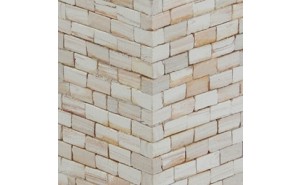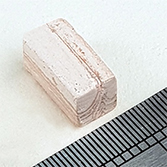Ashlars

An Ashlar is a dressed Stone, finely worked in some of his sides. It generally is cuboid shaped and, as a brick alternative, it’s used in masonry as its finest unit to build up walls and pillars.
An ashlar is normally obtained working a large stone; and has generally all external faces and faces adjacent to other ashlars, smoothed, flat and polished.
Ashlar blocks have been frequently used in classical Greek, roman and gothic architecture, but also in modern construction.
Standard sizes, large or small, have varied throughout history and places.
Is currently accepted to consider large ashlar blocks all dressed stones higher than 35 cm. once laid in courses.
Joints between blocks must be as thinner as possible, straight and regular, especially on visible sides.
Ashlar disposition is normally coursed, with long horizontal stone blocks rows in parallel with vertical and horizontal joints. But there are multiple combinations and names to determine each wall type, even allowing a random ashlar disposition.
As joining material, all dispositions normally use mortar to hold blocks together, being Dry ashlar masonry the one not using any kind of mortar or grout.
Materials, their resistance, colour, resilience, and diverse features logically depend on the origin place.
Fine dressed stones have historically been one of the most used construction unit on cathedrals, churches, bridges, castles, country houses, lighthouses, towers, walls and city gates.




.jpg)